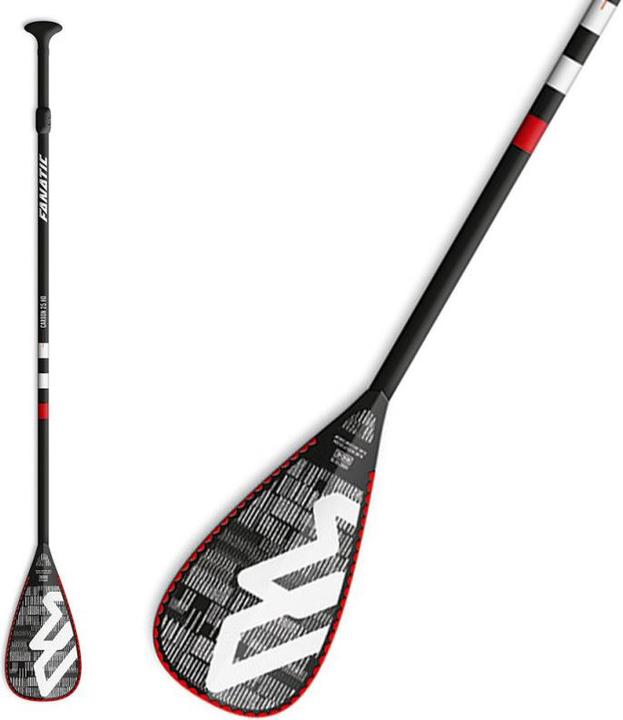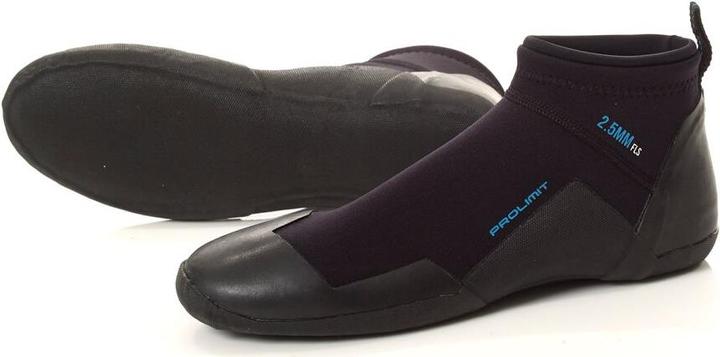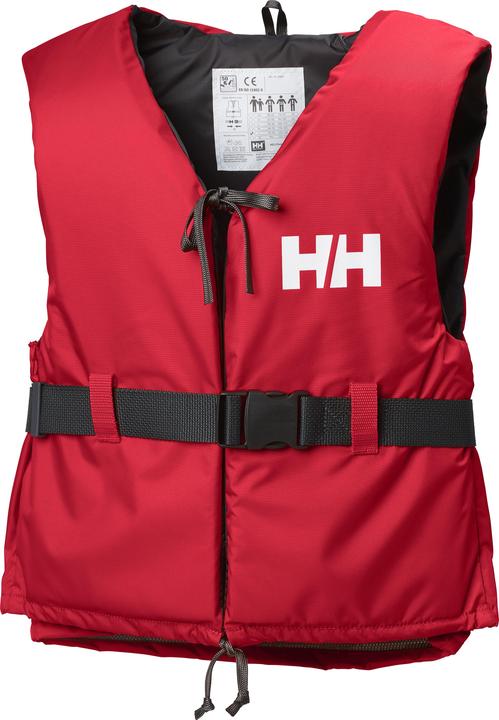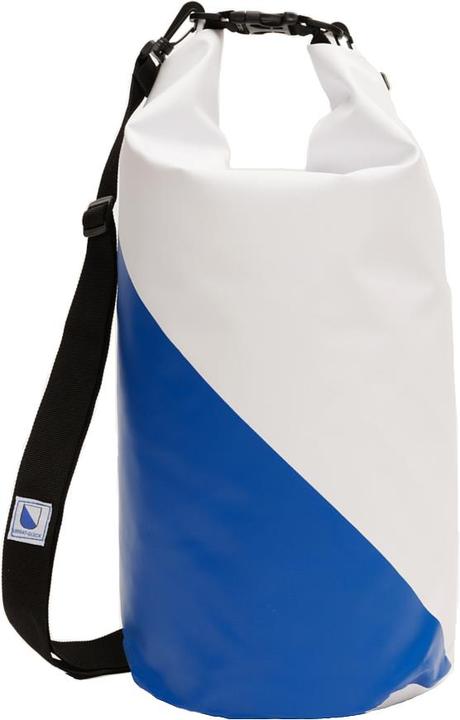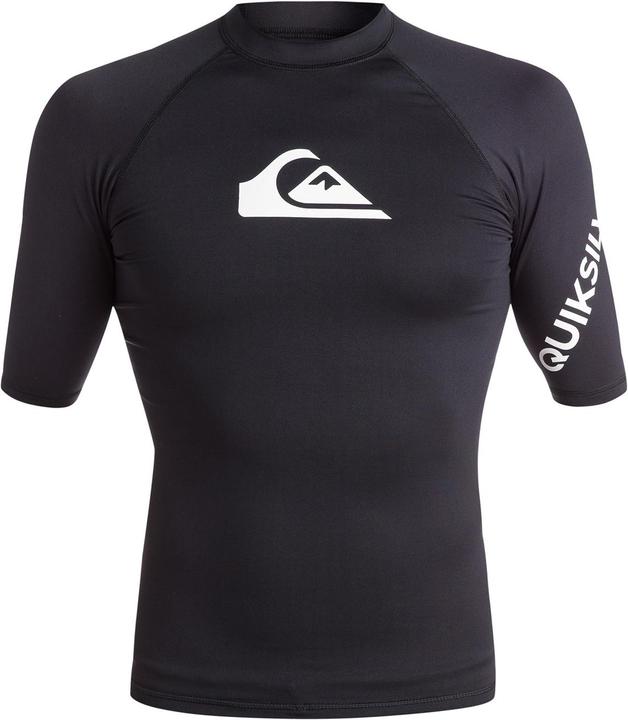
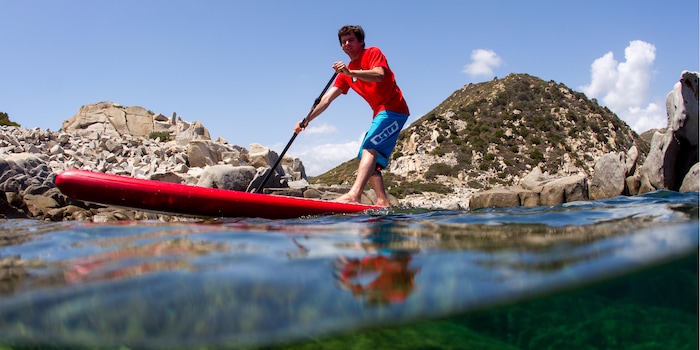
The first paddle strokes on the water
If you want to go on longer SUP tours on lakes, rivers or the sea, you need good paddling technique. Stand-up paddle pioneer and extreme paddler Thomas Oschwald explains how it works. So nothing stands in the way of your stand-up paddle adventure.
Stand-up paddling is booming. The inflatable SUP boards make getting started in the SUP world pretty easy. The paddle boards are easy to carry in the car or on your back to the lake and can be inflated in less than five minutes. Even though it's child's play to get started in the world of stand-up paddling, it's worth attending an introductory course to learn the right paddling technique. Most Swiss lakes have SUP stations with expert staff. If you don't want to be shown the technique by a SUP instructor on site, the following tips may be helpful:

Water in and out
Make sure that your fin doesn't touch the bottom when you put it in the water. In shallow water, you can also lay the SUP board on the water with the tip facing the beach. This places the fin in deeper water. Then kneel on the board and paddle until you don't touch the ground, rocks or a harbour wall in the event of a fall.
Don't look down when standing up, but look forwards and use the paddle as an additional stabilisation aid. Position your feet to the left and right of the handle (SUP board handle). Always make sure that you are neither too far back nor too far forward on the stand-up paddle board. The board should lie as flat as possible on the water when paddling so that friction is minimised. With a little practice, you can stand on the board and start paddling straight away. However, avoid falling at all costs and prefer to kneel down in challenging situations.
Neoprene shoes can be a useful accessory to protect your feet from sharp rocks. They make getting in and out of the water much easier and safer. They also ensure that your feet stay nice and warm even at low temperatures.
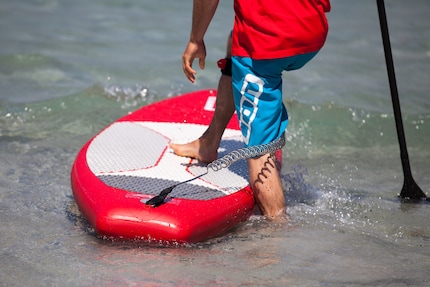
The paddle length
The ideal paddle length depends on personal taste and the intended use. As a beginner, it is advisable to use two- or three-piece telescopic paddles. They can be easily adjusted until the optimum paddle length is found.
As a guide, you can start with the following measurements: Stretch your arm upwards and adjust the paddle so that it fits under your wrist. This is usually around 15 to 20 centimetres above your head. The better your technique and the more you start paddling from the torso, the shorter the paddle can be. When experimenting with different lengths, also bear in mind that the thickness of the SUP board has an influence on the paddle length. With thicker boards, you stand further above the water and the paddle is longer.
Most paddles have a slight bend. This means that the paddle blade has a slight angle to the paddle shaft. The bend always points forwards on the paddle. The paddle should therefore be held so that the blade bends forwards. This may seem illogical, but the bend ensures that you have longer pressure on the paddle when paddling (see below) and can therefore transfer more power to the water. Some paddles have a logo on the side that points forwards when paddling. If the top part of a telescopic paddle can be turned freely, also make sure that the paddle handle is correctly aligned. This should always be parallel to the paddle blade.
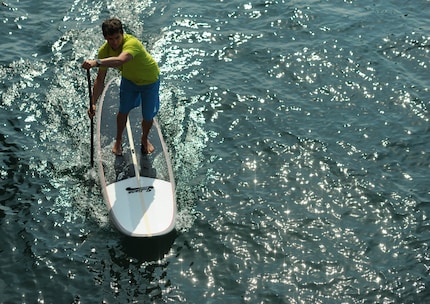
The paddling technique
Put the paddle blade into the water as far forward as possible and immerse the paddle blade completely in the water. This is an important prerequisite so that you can generate a lot of energy for a long time during the subsequent paddle stroke. The upper body, arms and upper third of the paddle form a triangle during an effective immersion phase - the so-called triangle of strength. The arms are therefore stretched. The lower pull arm is only slightly bent during the subsequent paddle pull, the upper push arm is only slightly bent when the paddle is returned. With an optimal technique, the triangle of forces is visible at all times. The paddle is pulled backwards in a straight line through the water during the paddle stroke.
Many beginners tend to paddle following the shape of the board. As a result, the SUP board starts to turn after just a few strokes. In order to stay on course for longer, it is advisable to start the paddle stroke slightly away from the tip of the board so that the paddle blade can be guided straight and evenly backwards. However, do not pull the blade too far back. The so-called power zone only extends to about the height of the paddler. Anything that happens to the blade beyond the power zone is a waste of energy, as the pull is no longer perfectly backwards, but increasingly upwards. In this ineffective zone, more and more energy is lost in an upward paddle movement. So it's high time to return the paddle to its original position.
If you want to further refine your paddling technique, utilise the possibilities of digital media. Whether with a waterproof mobile or an action camera. Video analysis is a good way to recognise incorrect movement patterns. Compare your movements with professional paddling sequences and keep working on your technique. You can find numerous tips and tricks on the internet. An experienced SUP instructor can also help you. Direct feedback from a person is definitely worth its weight in gold if you want to paddle to the top.
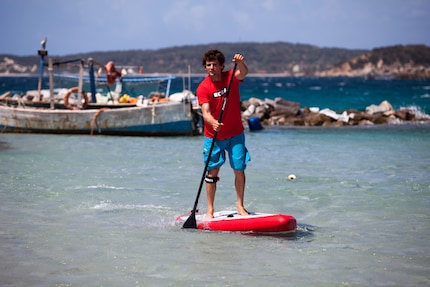
Avoid headwinds
Plan the length and difficulty of your SUP tour according to your physical abilities. Pay attention to the wind and weather conditions. Strong headwinds can really spoil a tour. Depending on the location and size of the lake, you have different wind systems. In calm, high-pressure weather conditions, for example, thermal winds change direction by 180 degrees during the course of the day. In the morning or after sunset, the cold air flows from the mountains into the lowlands. This creates a mountain wind. As the day progresses, the mountain flanks heat up more and more. The warm air rises and the air close to the ground is replaced by air from the valley. This creates the so-called valley wind. The wind can be so strong that you won't make it back to the starting point. Pay attention to these thermal winds on your next paddling tour and try to take them into account when planning your trip.
You can paddle in any weather. As a beginner, however, it is advisable to avoid windy days. Wind makes the water surface noticeably more turbulent and the upright body posture offers a large surface to attack. Moving harmoniously can quickly become an unwanted challenge, which can be very frustrating for beginners.
If you still want to go paddling in windy conditions, paddle into the wind first so that you can benefit from the tailwind when you are tired. However, pay attention to the valley and mountain wind systems described above, otherwise you will always have a headwind in the worst case scenario.
You might also be interested in:
Always looking for new challenges in sports and in everyday life, I always push myself to my limits. It is my conviction that all the big and small challenges in life will help me get ahead. As an extreme paddler, I don't feel like going down paths that I know in advance are possible without any problems. A journey, a dream or an adventure should never lose the uncertainty and always keep the chance to make something seemingly impossible possible.
<a href="http://supthelake.ch" target="_blank">supthelake.ch</a>
Interesting facts about products, behind-the-scenes looks at manufacturers and deep-dives on interesting people.
Show all
